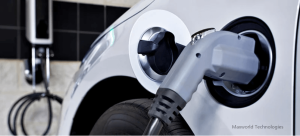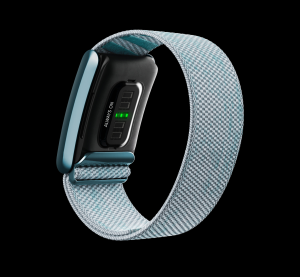Different 12V Battery Types: Select the Best One for You
For individuals who are not familiar with battery science, selecting the best 12-volt (12V) house battery can be a little intimidating. Although all 12V battery types can power 12V electrical systems, there are some significant differences between the various possibilities in terms of cost, maintenance requirements, design, and capacity. We’ll go through the factors to consider while selecting the ideal 12V battery for you!

How does a 12V battery work?
Comparable to other kinds of batteries, 12V batteries work by using cells to create a chemical reaction that allows electrons to flow across a circuit. All they can do is store energy for you to use at a later time; they cannot produce power on their own.
Direct current (DC) power is the kind that 12-volt batteries generate. Many different kinds of electrical devices are powered by DC power, which is a linear electrical current. Electricity from outlets that use alternating current (AC) fluctuates in current on a regular basis, but electricity from direct current sources provides a constant voltage. Many domestic equipment use AC electricity, which is less constant but travels far farther because of its wave-like motion. This home equipment can be powered by an inverter, which can transform DC electricity into AC power as necessary.
Vans, maritime vessels, RVs, and other rigs are frequently equipped with 12V battery systems. Higher-load gadgets can be readily updated to run on them, and they typically contain more than enough power for lighting and basic appliances. When equipped with the appropriate setups, these battery systems can be charged by the alternator, solar panels, or shore power electricity.
12V Battery Types
As deep cycle house batteries, 12V batteries are utilized in deep cycle RV, van, and marine systems in addition to being employed for starting purposes.
Lead-acid batteries have long been utilized for energy storage in RVs and other applications, despite the fact that lithium-ion technology is relatively new. The most basic sort of 12 volt battery is lead-acid battery. They store energy chemically and are composed of lead plates suspended in a sulfuric acid solution. Essentially, there are four types of lead-acid batteries.
Lead-acid battery flooding
The most prevalent kind of lead-acid batteries are flooded batteries. To keep working the way they are supposed to, they need to have the right amount of water in reserve. Regular maintenance is required to inspect and guarantee the battery is operating properly. Lead-acid flooded batteries typically have a lifespan of two to five years, contingent upon usage and maintenance frequency. Although their price varies greatly, it usually costs approximately $100.
Advantages
Because these are the most widely used type of batteries, they are also the most affordable to replace up front when the time comes. This kind of battery can generate a high current for a little amount of time and is devoid of circuitry. They are therefore perfect for jump-starting car batteries.
Negatives
You will need to be comfortable servicing your battery system every three to six months because these batteries require a certain level of fluid to function properly. This could be challenging, depending on where in your RV your batteries are positioned.
Aside from having the shortest lifespan of all the battery kinds, flooded lead-acid batteries are particularly susceptible to excessive heat or cold.
Lead-acid batteries with sealed valve regulation (VRLA)
Compared to their flooded equivalents, sealed valve-regulated lead-acid (VRLA) batteries require far less maintenance. As their name suggests, they are sealed tight and packed with all the parts needed to function for the duration of the battery.
Because the battery is sealed, hydrogen gas is produced during discharge and accumulates inside the battery due to a chemical reaction. The gas pressure in batteries can surpass safety limits when rapid charges or discharges occur, but normally, this gas is created slowly enough to combine with water in the battery. Unfortunately, if a regulator valve is used too frequently, it might gradually reduce the battery’s capacity. The regulator valve is provided to release any excess pressure.
Depending on usage, VRLA batteries have a lifespan of two to eight years and are quite straightforward to locate.
Advantages
These batteries are comparatively hassle-free because they require no maintenance. These are among the most affordably priced battery options, while being more expensive than flooded lead acid batteries.
Negatives
Many budget-conscious consumers could be turned off by even a small price increase. Additionally, if the battery is not maintained, gas may leak through the regulator valve and cause subpar performance over the course of the battery’s life.
Gel Batteries
Gel batteries, which hold their lead plates inside a thicker gel rather than a liquid solution, are regarded as a form of VRLA battery. These batteries range in price from $100 to $900 and typically last two to five years. Generally speaking, the price rises with battery capacity.
Advantages
Regular maintenance is not necessary for gel batteries because there is no liquid that could leak out of them. This makes it possible to put them in different orientations. They are therefore a viable choice for unique applications or as high-temperature engine starting batteries.
Negatives
Gel batteries must be charged with extra caution to prevent harm. They also need lower voltages and fewer charging cycles, necessitating a certain kind of charge controller. This raises the system’s total cost above and beyond the cost of the batteries. These batteries are susceptible to damage, just like other lead-acid kinds, from deep discharges and rapid recharges.
AGM Batteries
AGM (absorbent glass mat) batteries are one type of sealed lead-acid battery. The lead plates are positioned in between electrolyte mats wet with fiberglass. This enables more effective charging and draining. AGM batteries normally run between four and seven years for $200.
Advantages
AGM batteries operate well in most temperatures, don’t leak, and require no routine maintenance. In addition, they often have a longer lifespan and don’t require the particular maintenance and charging equipment required by other forms of lead acid batteries.
Negatives
When compared to conventional lead-acid or gel batteries of same capacity, AGM batteries can be substantially more expensive. These batteries are easily overcharged at high voltages and require precise charging levels. Furthermore, AGM batteries can only be used for a single use before needing to be fully charged again.
Difficulties with Every Type of Lead-Acid Battery
To prevent a reduction in their lifespan, lead-acid battery types all have precise usage and charging guidelines that need to be rigorously adhered to. Since severe discharges and partial charges will harm the battery, it is imperative to monitor the discharge and charge levels. In addition to having lengthy recharge durations, lead acid batteries require a unique absorption charge cycle in order to reach full capacity. Because of these drawbacks, lead-acid batteries are not a good option for renewable energy power applications or other uses involving repeated cycles of charging and discharging.
The cost of a 12V lithium-ion battery can range from $300 to $900 depending on the manufacturer and component quality.
Advantages
Of the several types of 12V batteries, lithium-ion batteries have the largest storage capacity and the most rapid and effective charging. Additionally, they outlast conventional lead-acid batteries by three to five times before needing to be replaced. Installing lithium-ion batteries anywhere and in any orientation is possible because they are sealed and don’t need to be vented.
Furthermore, unlike lead-acid batteries, lithium-ion batteries may release more of their stored energy without deteriorating the battery or decreasing its power. This guarantees that the battery will have its maximum potential for the duration of its life. Due to these advantages in charging, lithium-ion batteries work incredibly well with solar power systems that produce partial and repeating charging cycles, which is advantageous for usage in recreational vehicles.
Negatives
Of the 12V battery options, lithium-ion batteries have the highest upfront prices. Some systems could need additional parts and accessory changes to support a lithium-ion battery system because this technology is more recent. Lithium-ion batteries are not suitable for use as an engine starter since they have a current limit and aren’t certified for use with cold-cranking amps (CCA).
Despite initially costing more, lithium-ion batteries save money over time because they last a lot longer than lead-acid batteries. All things considered, lithium-ion batteries are a far safer and more practical choice than lead-acid ones.
How to Select the Ideal Type of 12V Battery for Yourself
Making trade-offs and deciding how and where you want to utilize your battery will help you choose the optimum 12V battery type. Each battery type offers benefits and drawbacks that can change based on how you want to travel.
Even though the flooded lead-acid batteries are more expensive in the long run, an RVer on a tight budget might choose them. Gel batteries solve part of these problems, but they come with higher costs and more frequent charging needs.
Lithium-ion or sealed lead-acid batteries are good options for RVers searching for low-maintenance batteries. Lithium-ion batteries are an excellent choice for people who are willing to make larger initial investments in exchange for longer-term cost savings and more dependable power.
Lithium-ion batteries are the greatest option overall due to their ideal blend of extended lifespans, low maintenance needs, sustainability, efficient charging and storage, and safety features.
Any adventure is made possible with 12V Maxworld Power Batteries
With our extensive selection of 12Vlithium iron phosphate (LiFePO4) batteries, Maxworld Power Batteries is able to meet any application’s needs for power.
The 12V 100Ah Battle Born Battery is the standard model in our lithium battery lineup. This is the ideal battery to add to your adventurous life! Numerous RV, boat, vehicle, and off-grid systems are compatible with this battery. This battery provides you with plenty of power wherever the road leads with its 3,000–5,000 lifecycles, 100 amp continuous current, 200 amp surge current (30 seconds), and half-second surge for heavier loads.
You can count on secure and dependable power for your all-weather excursions thanks to stable chemistry and an integrated battery management system (BMS).






